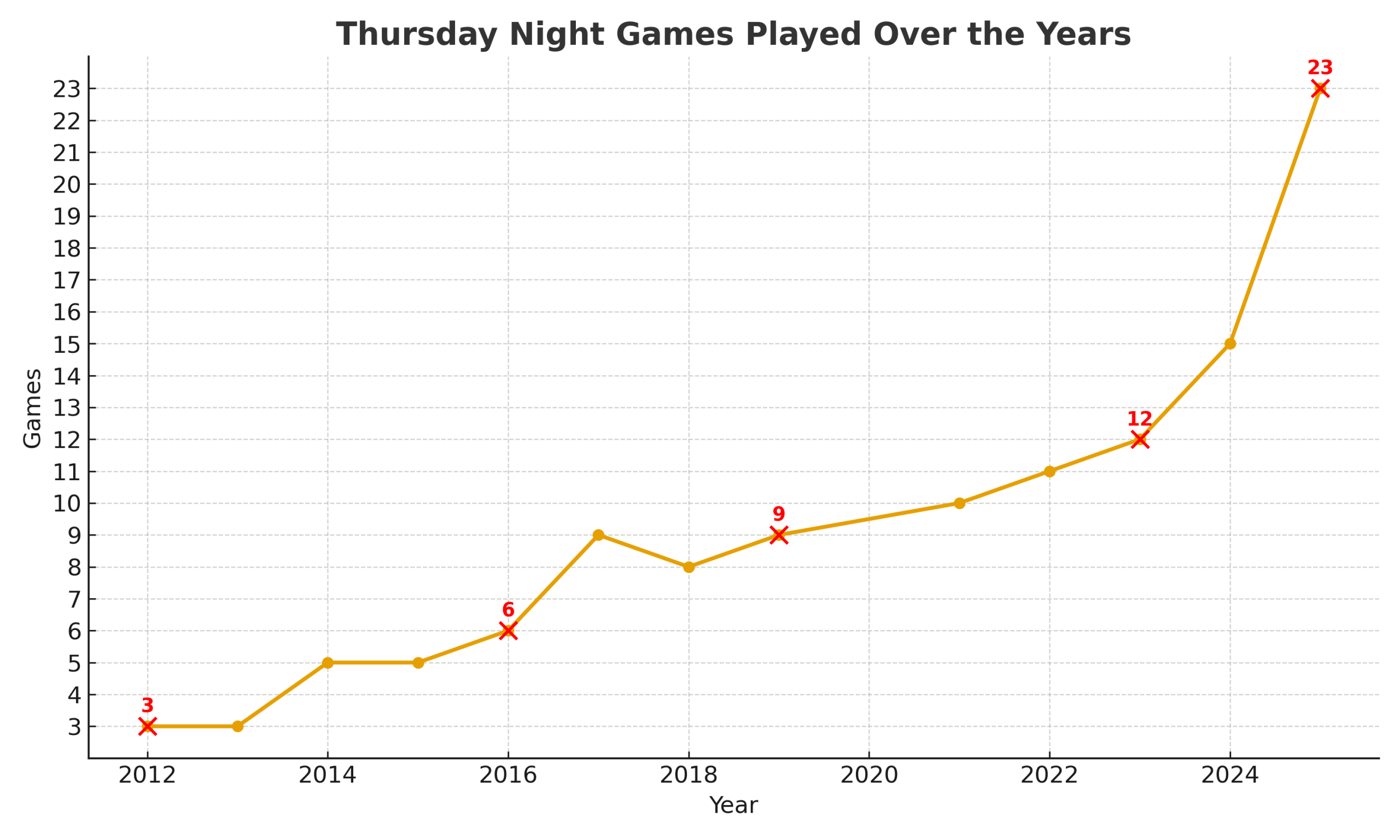The AFL let the genie out of the bottle by introducing permanent Thursday night fixtures in 2025, but did it turn out as they’d hoped?
The mid-week fixture has always featured a staple contest, dating back to 2008, when the league decided to put Victorian powerhouses Carlton and Richmond as the season opener.
But a thirst for more football and a “shortened” week saw the competition leaders increase the amount of Thursday night football over the years, culminating in 23 contests in 2025, including finals.
The increase in matches has seen the fans welcome the change, recording a near record of average attendance.
In 2023, Thursday night clashes saw 44,329 supporters flock to the stadium. The years either side of that struggled to reach the same numbers.
However, the most recent AFL season saw a minor spike, with 43,500 fans going along to watch the football, despite some of the results.
Of the 24 contests, including finals, 11 were decided by 20 points or less, although most of those were played in the first half of the season.
Clashes like the Round 21 affair between the Western Bulldogs and GWS yielded an 88-point difference, with the former also producing one-sided affairs against St Kilda and North Melbourne in the prime-time slot.
Hawthorn smashed Collingwood in Round 22 by 10 goals, while Port Adelaide wreaked similar havoc on Carlton just weeks earlier.
The AFL’s fixture-rolling of the back third of the year attempts to avoid such blowouts, but sometimes it just isn’t in the cards. The league couldn’t anticipate the Hawks’ dominance over the Pies, who were second at the time.
Nor would they predict that the Bulldogs and Giants, who historically play close and fiery encounters, would fail to live up to the standalone timeslot.
But what do the ratings say?
A change in the broadcasting landscape made a major difference, with Foxtel and Kayo Sports hosting all nine games across the weekend. They previously handed over to Channel 7 for the primetime slot.
As a result, the Seven Network recorded “an average of 577,000 per match. This was down 8/.4% YoY.”
On the contrary, Foxtel recorded a 22 per cent increase due to their dedicated commentary and graphics for Thursday night football, led by Matthew Hill and Mark Howard.
However, those numbers can be explained by the duopoly on Thursday night footy, spread across both channels.
So what does this all mean?
The AFL has implemented Thursday night football somewhat seamlessly, and aside from outlier contests, it has been a success to date.


